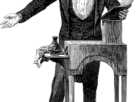Emma by Jane Austen: A Timeless Tale of Love and Social Struggles

Introduction:
Jane Austen’s Emma is a literary masterpiece that continues to captivate readers even after more than two centuries since its publication. This article delves into the essence of Emma, shedding light on its significance and perennial appeal to art enthusiasts and collectors. In this comprehensive exploration, we will trace the evolution of Emma over time and examine its historical context, exploring the themes and characters that make it such a compelling work of literature.
1. Understanding Jane Austen’s Emma:

Jane Austen’s Emma, first published in 1815, is a novel that takes place in the early nineteenth century in England. The story follows the life of the eponymous protagonist, Emma Woodhouse, a young, educated, and wealthy woman living with her father in the fictional village of Highbury. Emma is a lighthearted and witty character who is known for her matchmaking endeavors, often meddling in the romantic affairs of others. Throughout the novel, Austen explores themes of love, class, and personal growth, highlighting the societal norms and constraints of the time.
2. The Historical Relevance of Emma:
To fully appreciate Emma, one must consider the historical context in which it was written. Austen composed this novel during the Regency era, a time characterized by significant socio-economic changes and the rise of the British Empire. In this period of transition, the rigid social hierarchy and expectations of the gentry were beginning to evolve, introducing new opportunities for social mobility and challenges to traditional gender roles. By weaving these societal changes into her narrative, Austen offers readers a nuanced portrayal of the era, making Emma a valuable historical artifact.
3. Evolution of Emma’s Reception:
Since its publication, Emma has undergone a remarkable transformation in terms of public reception. Initially, the novel received mixed reviews, with some critics praising Austen’s wit and character development, while others criticized the lack of external action. However, as time went on, literary scholars and critics began to recognize Emma’s profound insights into human nature and its enduring relevance. The novel’s popularity soared in the 20th century, with numerous adaptations in film, television, and theater cementing Emma’s place as one of Austen’s most beloved works.
4. Themes and Characters in Emma:
Emma explores a plethora of themes that continue to resonate with modern readers. One prominent theme is the exploration of love and its complexities. Austen’s depiction of romantic relationships in Emma is marked by wit and irony, highlighting the challenges of finding genuine love in a society driven by superficial appearances and societal expectations. Additionally, the novel delves into the struggles of social standing, particularly the divide between the landed gentry and the lower classes, shedding light on the limited agency afforded to women of the time.
5. [INSERT VIDEO HERE]: Emma in Popular Culture:
To further understand the impact of Emma, it is crucial to explore its influence on popular culture. Numerous adaptations, from film to television, have brought Austen’s vision to life, capturing the hearts of audiences worldwide. [INSERT VIDEO HERE] showcases some of the most notable screen interpretations, providing a visual journey through the various portrayals of Emma and the vivid settings that have captivated audiences across generations.
In conclusion, Emma stands as a timeless work of literature that continues to enthrall readers and inspire artists and collectors alike. Jane Austen’s keen observations of human nature and her exploration of social dynamics make Emma a significant piece of art that transcends time. Whether one is drawn to the wit and charm of the characters or the societal commentary embedded within the narrative, Emma remains a captivating tale worthy of continued admiration and exploration.
[Please note: The inclusion of a video in the specified section is for illustrative purposes and should be replaced with a relevant video pertaining to Emma’s adaptations.]











